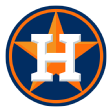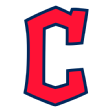Who will define MLB's superteam era? Ranking the top 6 contenders
The Boston Red Sox are royal again after a World Series rout of the Los Angeles Dodgers. Boston is coming off a 108-win season, owns the game's highest payroll and has a talented core of players in their primes.
Does this sound like a clear formula for a dynasty to you? It kind of does, but one thing we know about this era of big league baseball is that there is no true formula for a dynasty. At least not in the sense of the old Yankees of Mantle and Stengel, or even the recent Yankees of Torre-Jeter fame.
Other than payroll, those attributes -- 100-plus wins, prime-age talent cores -- were just as easily applied to the Chicago Cubs after they won the World Series in 2016. And we wrote some of the same things only last year about the Houston Astros, who, like the Red Sox, spent the final night of the baseball season dancing around on the grass at Dodger Stadium.
As rosy as things look today for the Red Sox, right now there is not a single team that defines this era. And maybe there won't be. There have been many stretches in baseball history where the championship trophy was passed around from team to team.
What makes this particular time in the majors so unique is that despite the lack of a repeat champion in recent years, it's not really due to leaguewide parity. Instead, we've entered a time where there are a handful of powerhouses, any of which could rise to the top in a given season. The Red Sox are clearly one of the haves, and so are the aforementioned Cubs and Astros. So too are the New York Yankees and the Dodgers. Some might argue that the Cleveland Indians should be involved in this mix as well.
These teams are working on multiyear streaks of postseason appearances:
• Dodgers, six straight postseason appearances (six National League West titles, two NL pennants)
• Cubs, four straight (two NL Central titles, one championship)
• Red Sox, three straight (three American League East titles, one championship)
• Indians, three straight (three AL Central titles, one pennant)
• Astros, two straight (two AL West titles, one championship)
• Yankees, two straight
• Rockies, two straight
And here are the best aggregate records over the past three regular seasons:
Red Sox, 294-192 (.605)
Cubs, 290-196 (.597)
Astros, 288-198 (.593)
Indians, 287-198 (.592)
Dodgers, 287-200 (.589)
Yankees, 275-211 (.566)
Nationals, 274-212 (.564)
Cardinals, 257-229 (.529)
Finally, here are the current odds for winning the 2019 World Series, courtesy of the Westgate Las Vegas SuperBook:
Red Sox 6-1
Astros 6-1
Dodgers 7-1
Yankees 7-1
Cubs 10-1
Indians 10-1
It's a pretty familiar-looking list, no?
We certainly could have a party-crasher in next year's Fall Classic. The Milwaukee Brewers came within one game of getting there this time around and will have all of their key players back. The Atlanta Braves won the NL East this season and are just opening their newest window of contention. The Washington Nationals shouldn't be forgotten, either, despite Bryce Harper's free agency. We certainly considered them one of the superteams when the 2018 season dawned.
But let's focus on the teams leading the betting markets, because those are also the teams that lead the three-year standings chart and who are among those working on multiyear postseason streaks. If any of those teams was to break through with a couple of titles, it could become a team that defines this era. If we accept that as a possibility, who is best positioned to do that?
We're going to run through the leading candidates in order of most likely to be a dynasty, to the least, while explaining the general outlook for each club. If you skim ahead just to see the rankings, that's cheating. Your mother would be very ashamed and your dog won't like you anymore.
1. Boston Red Sox
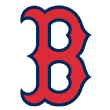 The Red Sox have a number of free agents, including World Series MVP Steve Pearce. After his age-35 coming-out party, it would be great if Pearce could cash in on the open market, but his age and position work against him. At the very least, he will remain an attractive right-handed complement for Mitch Moreland at first base, and obviously he fit in well in the Boston clubhouse.
The Red Sox have a number of free agents, including World Series MVP Steve Pearce. After his age-35 coming-out party, it would be great if Pearce could cash in on the open market, but his age and position work against him. At the very least, he will remain an attractive right-handed complement for Mitch Moreland at first base, and obviously he fit in well in the Boston clubhouse.
In terms of our dynasty question, more pertinent than Pearce are the destinies of free-agent pitchers Nathan Eovaldi, Joe Kelly and Craig Kimbrel. Eovaldi and Kelly likely made themselves some money with their October showings. The picture for Kimbrel is murky, given the economic dissolution of the closer concept and the signs of wear and tear he showed this season. For Boston, the bottom line is that the Red Sox will either have to buck up to retain some quality arms, or will have to spend elsewhere for solutions against a lot of other bidders.
The Red Sox system ranked 24th in Keith Law's January rankings, and while Keith lauded Boston's 2017 draft class, those players aren't likely solutions for 2019 roster spots. With so many free agents, the Red Sox will have a certain amount of financial flexibility, given their MLB-high payroll this season. But there is also an opportunity to spend on the margins and attempt to reset their counter against the luxury-tax line. That would be a bit draconian and wouldn't be a very Dave Dombrowski thing to do, but it's an option.
The base of talent will still be there. J.D. Martinez, Mookie Betts, Andrew Benintendi, Xander Bogaerts et al. Rafael Devers should still be on the upswing. Boston probably won't count heavily on a recovered Dustin Pedroia, but he could help. On the pitching staff, David Price can opt out, but it would be a shock if he did. The Sox held a team option on Chris Sale that was such a no-brainer they managed to pick it up even while planning their victory parade.
One metric looked at for this piece was a quick estimate of projected WAR for players who will still be under 30 by the start of next season. The method was a bit rough, but the Red Sox ranked 17th in the measure. You've basically got the Killer B's plus Devers, then it starts to look a little more "veteran." Historically that could mean injuries, decline, poor production-to-pay ratios and such.
Nevertheless, just because the likes of Sale, Price and Martinez are or soon will be on the wrong side of the 30, that doesn't mean they'll fall off a cliff. In fact, their track records are so strong and stable it would be a shock if that happened to any of them. But it's always a worry when too much age creeps onto a roster.
The 2018 title was a top-to-bottom accomplishment and there are some uncertainties here beyond the core. Uncertainties also can be looked at as opportunities in disguise. With the right moves, Boston could be even better next season and beyond. It would not be surprising given how well the Red Sox have been run since John Henry and his partners acquired the team 16 years ago.
When it comes to dynastic possibilities, it's hard, really, to choose among the Dodgers, Yankees, Astros and Red Sox. But Boston has more money than Houston. And as far as the Yankees and Dodgers go, the Red Sox have something from this era those clubs don't: a title.
2. Los Angeles Dodgers
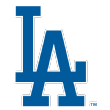 The Dodgers have not spent big on outside free-agent additions during the Andrew Friedman era. They skirted the luxury-tax threshold this season to give themselves the option of doing just that over the winter. Of course, that plan was likely put into action in anticipation of what was once a ballyhooed free-agent class that no longer looks particularly likely to remake the league's hierarchy.
The Dodgers have not spent big on outside free-agent additions during the Andrew Friedman era. They skirted the luxury-tax threshold this season to give themselves the option of doing just that over the winter. Of course, that plan was likely put into action in anticipation of what was once a ballyhooed free-agent class that no longer looks particularly likely to remake the league's hierarchy.
The first order of business for the Dodgers is Clayton Kershaw's decision on whether to opt out. That decision will be known within the next couple of days. If he stays, the Dodgers will retain their ace for at least two more seasons for around $35 million per year. It's also possible that L.A. and Kershaw will announce an extension, or that Kershaw is soon to be gone. Right now, all these possibilities seem about equally probable. The key question to ask: If Kershaw were another team's free agent, how hard would the Dodgers pursue him?
Manny Machado is the other headline free agent for the Dodgers. One hopes he had a short-term lease on his dwelling in L.A. Corey Seager will be back at shortstop for the Dodgers next season and for years beyond that. Could the Dodgers spring for the $200 million to $300 million it would take to keep Machado in the fold? Sure. It's possible.
The key to the Dodgers' dynasty hopes is that even as they've built baseball's deepest big league roster, they haven't depleted their farm system. And it's a good one. Yasmani Grandal is a free agent, but Austin Barnes is still around, veteran backups are cheap and L.A. has two of the game's best catching prospects in Keibert Ruiz and Will Smith.
Looking at the Dodgers' roster and the free-agent class to come, sure, they could spring for somebody like Harper, who is young and would make any team better. It would certainly be scary for the rest of the majors if that happened. But the Dodgers don't have to make that kind of acquisition to remain a viable contender. For one thing, they have a very good outfield prospect in Alex Verdugo, who in most organizations probably would have played much of 2018 in the majors. Plus, we don't yet know who 2019's version of Chris Taylor and Max Muncy is going to be.
Every organizational trait you look for in assessing sustainability is in place. Law had the Dodgers' system ranked ninth before the season. As far as under-30 talent already on the 40-man roster, the Dodgers rank third in the majors. They have as much ability to expand payroll as any team in baseball yet also just reset their luxury-tax counter. They have one of baseball's best analytical operations. They have strong records in development in both the majors and the minors.
You can see where this is going. The Dodgers have come up just short two years in a row, but this organization isn't going anywhere. L.A. is not likely to become baseball's version of the 1990s Buffalo Bills.
3. New York Yankees
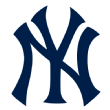 Really, it's a toss-up between the Yankees and Dodgers, but L.A. has done more in the postseason. We can't really judge these neo-dynasties by the standards of the days of Mantle and Rizzuto. Teams just aren't going to reel off five, six titles in a row anymore. Even if the Yankees were able to buy the 20 best players in the majors, the sheer randomness of the postseason format would prevent that from happening.
Really, it's a toss-up between the Yankees and Dodgers, but L.A. has done more in the postseason. We can't really judge these neo-dynasties by the standards of the days of Mantle and Rizzuto. Teams just aren't going to reel off five, six titles in a row anymore. Even if the Yankees were able to buy the 20 best players in the majors, the sheer randomness of the postseason format would prevent that from happening.
The Dodgers have two pennants during this superteam era. The Yankees have one trip to the American League Championship Series. If the Dodgers win a title next year, we might already begin to refer to them as a dynasty. The Yankees probably need a title and another deep run to get there. That is why L.A. is ranked ahead of the Yankees.
Beyond that, there isn't much to distinguish the clubs. The Yankees have the most under-30 projected WAR of any team's 40-man roster. They have what was ranked by most as a top-five farm system before the season. They reset their luxury-tax counter. And they are the New York Yankees -- they will be in the running for every major free agent who hits the market.
That role as a prime free-agent destination helped bring down the last sustained run of high-level Yankees success. However, general manager Brian Cashman is doing things differently. The spending will be immense, but within the bounds of efficiency. The farm system is no longer neglected. It seems exceedingly unlikely that New York will again succumb to the excesses of the past.
As for that under-30 talent: Aaron Judge, Gary Sanchez, Gleyber Torres, Miguel Andujar, Giancarlo Stanton, Didi Gregorius, Manny Machado (see what we did there) -- it's awesome. The only thing that could hold the Yankees back is if their pitching prospects don't develop and if free-agent additions to the staff don't pan out, which is always a risk. New York is going to need to make some impact rotation additions this winter.
The Boston Red Sox are royal again after a World Series rout of the Los Angeles Dodgers. Boston is coming off a 108-win season, owns the game's highest payroll and has a talented core of players in their primes.
Does this sound like a clear formula for a dynasty to you? It kind of does, but one thing we know about this era of big league baseball is that there is no true formula for a dynasty. At least not in the sense of the old Yankees of Mantle and Stengel, or even the recent Yankees of Torre-Jeter fame.
Other than payroll, those attributes -- 100-plus wins, prime-age talent cores -- were just as easily applied to the Chicago Cubs after they won the World Series in 2016. And we wrote some of the same things only last year about the Houston Astros, who, like the Red Sox, spent the final night of the baseball season dancing around on the grass at Dodger Stadium.
As rosy as things look today for the Red Sox, right now there is not a single team that defines this era. And maybe there won't be. There have been many stretches in baseball history where the championship trophy was passed around from team to team.
What makes this particular time in the majors so unique is that despite the lack of a repeat champion in recent years, it's not really due to leaguewide parity. Instead, we've entered a time where there are a handful of powerhouses, any of which could rise to the top in a given season. The Red Sox are clearly one of the haves, and so are the aforementioned Cubs and Astros. So too are the New York Yankees and the Dodgers. Some might argue that the Cleveland Indians should be involved in this mix as well.
These teams are working on multiyear streaks of postseason appearances:
• Dodgers, six straight postseason appearances (six National League West titles, two NL pennants)
• Cubs, four straight (two NL Central titles, one championship)
• Red Sox, three straight (three American League East titles, one championship)
• Indians, three straight (three AL Central titles, one pennant)
• Astros, two straight (two AL West titles, one championship)
• Yankees, two straight
• Rockies, two straight
And here are the best aggregate records over the past three regular seasons:
Red Sox, 294-192 (.605)
Cubs, 290-196 (.597)
Astros, 288-198 (.593)
Indians, 287-198 (.592)
Dodgers, 287-200 (.589)
Yankees, 275-211 (.566)
Nationals, 274-212 (.564)
Cardinals, 257-229 (.529)
Finally, here are the current odds for winning the 2019 World Series, courtesy of the Westgate Las Vegas SuperBook:
Red Sox 6-1
Astros 6-1
Dodgers 7-1
Yankees 7-1
Cubs 10-1
Indians 10-1
It's a pretty familiar-looking list, no?
We certainly could have a party-crasher in next year's Fall Classic. The Milwaukee Brewers came within one game of getting there this time around and will have all of their key players back. The Atlanta Braves won the NL East this season and are just opening their newest window of contention. The Washington Nationals shouldn't be forgotten, either, despite Bryce Harper's free agency. We certainly considered them one of the superteams when the 2018 season dawned.
But let's focus on the teams leading the betting markets, because those are also the teams that lead the three-year standings chart and who are among those working on multiyear postseason streaks. If any of those teams was to break through with a couple of titles, it could become a team that defines this era. If we accept that as a possibility, who is best positioned to do that?
We're going to run through the leading candidates in order of most likely to be a dynasty, to the least, while explaining the general outlook for each club. If you skim ahead just to see the rankings, that's cheating. Your mother would be very ashamed and your dog won't like you anymore.
1. Boston Red Sox

In terms of our dynasty question, more pertinent than Pearce are the destinies of free-agent pitchers Nathan Eovaldi, Joe Kelly and Craig Kimbrel. Eovaldi and Kelly likely made themselves some money with their October showings. The picture for Kimbrel is murky, given the economic dissolution of the closer concept and the signs of wear and tear he showed this season. For Boston, the bottom line is that the Red Sox will either have to buck up to retain some quality arms, or will have to spend elsewhere for solutions against a lot of other bidders.
The Red Sox system ranked 24th in Keith Law's January rankings, and while Keith lauded Boston's 2017 draft class, those players aren't likely solutions for 2019 roster spots. With so many free agents, the Red Sox will have a certain amount of financial flexibility, given their MLB-high payroll this season. But there is also an opportunity to spend on the margins and attempt to reset their counter against the luxury-tax line. That would be a bit draconian and wouldn't be a very Dave Dombrowski thing to do, but it's an option.
The base of talent will still be there. J.D. Martinez, Mookie Betts, Andrew Benintendi, Xander Bogaerts et al. Rafael Devers should still be on the upswing. Boston probably won't count heavily on a recovered Dustin Pedroia, but he could help. On the pitching staff, David Price can opt out, but it would be a shock if he did. The Sox held a team option on Chris Sale that was such a no-brainer they managed to pick it up even while planning their victory parade.
One metric looked at for this piece was a quick estimate of projected WAR for players who will still be under 30 by the start of next season. The method was a bit rough, but the Red Sox ranked 17th in the measure. You've basically got the Killer B's plus Devers, then it starts to look a little more "veteran." Historically that could mean injuries, decline, poor production-to-pay ratios and such.
Nevertheless, just because the likes of Sale, Price and Martinez are or soon will be on the wrong side of the 30, that doesn't mean they'll fall off a cliff. In fact, their track records are so strong and stable it would be a shock if that happened to any of them. But it's always a worry when too much age creeps onto a roster.
The 2018 title was a top-to-bottom accomplishment and there are some uncertainties here beyond the core. Uncertainties also can be looked at as opportunities in disguise. With the right moves, Boston could be even better next season and beyond. It would not be surprising given how well the Red Sox have been run since John Henry and his partners acquired the team 16 years ago.
When it comes to dynastic possibilities, it's hard, really, to choose among the Dodgers, Yankees, Astros and Red Sox. But Boston has more money than Houston. And as far as the Yankees and Dodgers go, the Red Sox have something from this era those clubs don't: a title.
2. Los Angeles Dodgers

The first order of business for the Dodgers is Clayton Kershaw's decision on whether to opt out. That decision will be known within the next couple of days. If he stays, the Dodgers will retain their ace for at least two more seasons for around $35 million per year. It's also possible that L.A. and Kershaw will announce an extension, or that Kershaw is soon to be gone. Right now, all these possibilities seem about equally probable. The key question to ask: If Kershaw were another team's free agent, how hard would the Dodgers pursue him?
Manny Machado is the other headline free agent for the Dodgers. One hopes he had a short-term lease on his dwelling in L.A. Corey Seager will be back at shortstop for the Dodgers next season and for years beyond that. Could the Dodgers spring for the $200 million to $300 million it would take to keep Machado in the fold? Sure. It's possible.
The key to the Dodgers' dynasty hopes is that even as they've built baseball's deepest big league roster, they haven't depleted their farm system. And it's a good one. Yasmani Grandal is a free agent, but Austin Barnes is still around, veteran backups are cheap and L.A. has two of the game's best catching prospects in Keibert Ruiz and Will Smith.
Looking at the Dodgers' roster and the free-agent class to come, sure, they could spring for somebody like Harper, who is young and would make any team better. It would certainly be scary for the rest of the majors if that happened. But the Dodgers don't have to make that kind of acquisition to remain a viable contender. For one thing, they have a very good outfield prospect in Alex Verdugo, who in most organizations probably would have played much of 2018 in the majors. Plus, we don't yet know who 2019's version of Chris Taylor and Max Muncy is going to be.
Every organizational trait you look for in assessing sustainability is in place. Law had the Dodgers' system ranked ninth before the season. As far as under-30 talent already on the 40-man roster, the Dodgers rank third in the majors. They have as much ability to expand payroll as any team in baseball yet also just reset their luxury-tax counter. They have one of baseball's best analytical operations. They have strong records in development in both the majors and the minors.
You can see where this is going. The Dodgers have come up just short two years in a row, but this organization isn't going anywhere. L.A. is not likely to become baseball's version of the 1990s Buffalo Bills.
3. New York Yankees

The Dodgers have two pennants during this superteam era. The Yankees have one trip to the American League Championship Series. If the Dodgers win a title next year, we might already begin to refer to them as a dynasty. The Yankees probably need a title and another deep run to get there. That is why L.A. is ranked ahead of the Yankees.
Beyond that, there isn't much to distinguish the clubs. The Yankees have the most under-30 projected WAR of any team's 40-man roster. They have what was ranked by most as a top-five farm system before the season. They reset their luxury-tax counter. And they are the New York Yankees -- they will be in the running for every major free agent who hits the market.
That role as a prime free-agent destination helped bring down the last sustained run of high-level Yankees success. However, general manager Brian Cashman is doing things differently. The spending will be immense, but within the bounds of efficiency. The farm system is no longer neglected. It seems exceedingly unlikely that New York will again succumb to the excesses of the past.
As for that under-30 talent: Aaron Judge, Gary Sanchez, Gleyber Torres, Miguel Andujar, Giancarlo Stanton, Didi Gregorius, Manny Machado (see what we did there) -- it's awesome. The only thing that could hold the Yankees back is if their pitching prospects don't develop and if free-agent additions to the staff don't pan out, which is always a risk. New York is going to need to make some impact rotation additions this winter.
